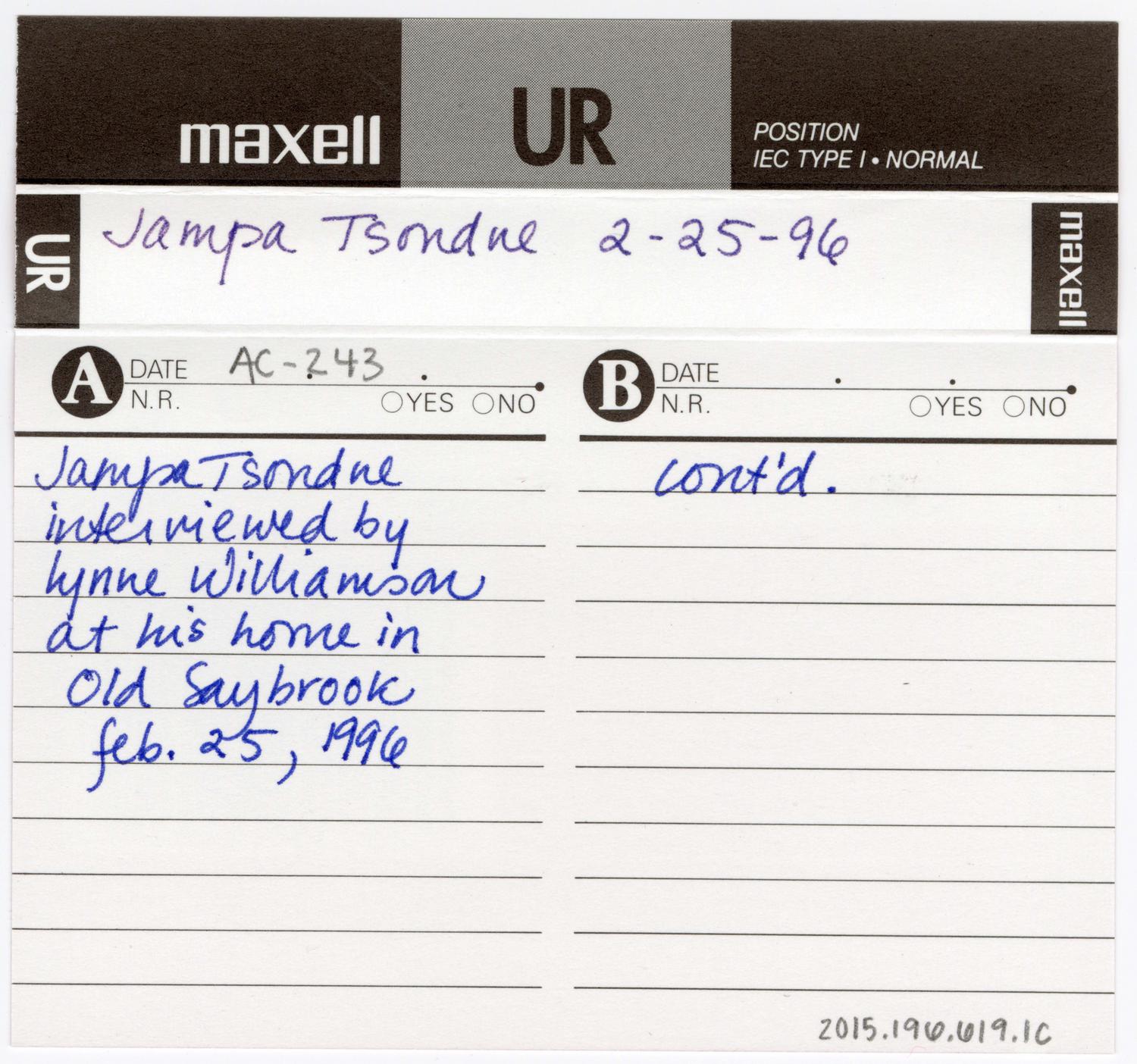Jampa Tsondue
Tibetan, born 1959
BiographyJampa Tsondue was born in 1959 just after his parents arrived in India, having left their farmland in Shigatse near Lhasa. Settling in Darjeeling, the family was visited by a monk-painter who noticed Jampa's talent. After school each day from the age of thirteen Jampa took art lessons from this teacher, Ngawang Norbu. Later Jampa moved south to Mysore to become an apprentice to this famous painter at the Gyudmed Tantric University, studying techniques of thangka painting for five years. The bond between master teacher and student can become very strong, almost familial. Jampa worked with his teacher, who also lived with the family, for the next fifteen years. Together they accepted commissions for thangka paintings, murals, and restoration of old art works. Their most important project took four painters nearly four years to complete - recreating forty-one thangkas in the Dalai Lama's collection, each 4 feet by 3 feet, depicting the past lives of the Buddha.
In 1992, Jampa was chosen by lottery to come to America with 1000 Tibetans, and he settled in Old Saybrook where he still lives. Although working and raising three children, Jampa has completed several thangkas in America although each requires a long process; he does not make them for sale. Every Tibetan has a home altar, and Jampa has created an altar in his house where his thangkas are used by his family for meditation. He has been very active in the Tibetan Association of Connecticut, a social organization that serves the nearly 500 Tibetans that have settled in Connecticut (growing from the 21 who came in 1992). Jampa participates in community gatherings to celebrate Losar, New Year, and the Dalai Lama’s birthday. In February 2007, Jampa’s paintings and drawings were on display at Wesleyan University, at the Mansfield Freeman Center for East Asian Studies, organized by Patrick Dowdey, curator and professor at the Freeman Center. Jampa also did a demonstration of thangka painting there. This was his first exhibition in many years, and his first solo exhibit. Exhibitions and demonstrations featuring Jampa’s work have taken place at Trinity College, Hartford, the Ambassadors of Folk: Connecticut Master Traditional Artists exhibit at the Institute for Community Research in Hartford, the Auspicious Signs: Tibetan Arts in New England exhibition also at ICR, and an exhibit at the Connecticut Office of the Arts Gallery that celebrated 25 years of the Connecticut Cultural Heritage Arts Program. Jampa has taught his daughter Yangzom to create thangkas. In 2015, Jampa received a Folk Arts Fellowship from the Connecticut Office of the Arts.
In 1992, Jampa was chosen by lottery to come to America with 1000 Tibetans, and he settled in Old Saybrook where he still lives. Although working and raising three children, Jampa has completed several thangkas in America although each requires a long process; he does not make them for sale. Every Tibetan has a home altar, and Jampa has created an altar in his house where his thangkas are used by his family for meditation. He has been very active in the Tibetan Association of Connecticut, a social organization that serves the nearly 500 Tibetans that have settled in Connecticut (growing from the 21 who came in 1992). Jampa participates in community gatherings to celebrate Losar, New Year, and the Dalai Lama’s birthday. In February 2007, Jampa’s paintings and drawings were on display at Wesleyan University, at the Mansfield Freeman Center for East Asian Studies, organized by Patrick Dowdey, curator and professor at the Freeman Center. Jampa also did a demonstration of thangka painting there. This was his first exhibition in many years, and his first solo exhibit. Exhibitions and demonstrations featuring Jampa’s work have taken place at Trinity College, Hartford, the Ambassadors of Folk: Connecticut Master Traditional Artists exhibit at the Institute for Community Research in Hartford, the Auspicious Signs: Tibetan Arts in New England exhibition also at ICR, and an exhibit at the Connecticut Office of the Arts Gallery that celebrated 25 years of the Connecticut Cultural Heritage Arts Program. Jampa has taught his daughter Yangzom to create thangkas. In 2015, Jampa received a Folk Arts Fellowship from the Connecticut Office of the Arts.
Person TypeIndividual











